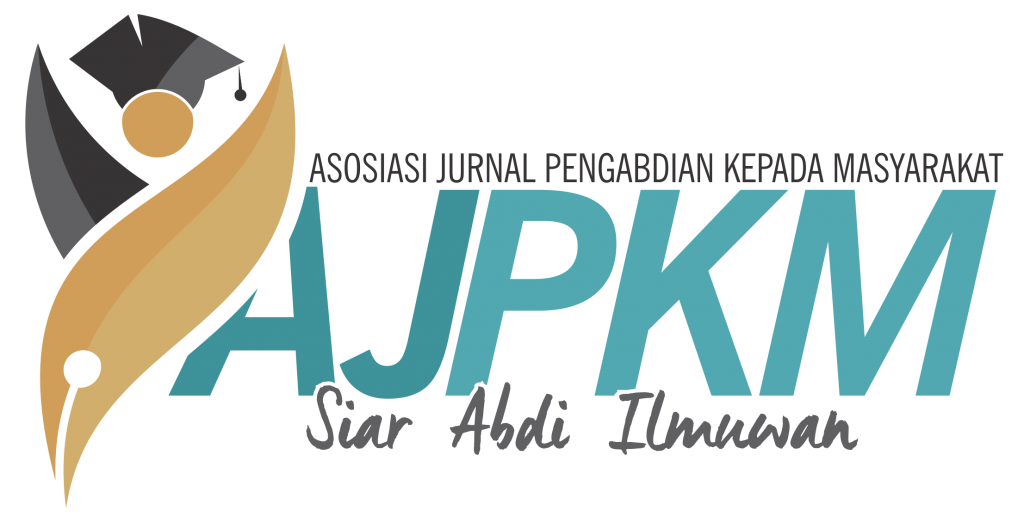Pendidikan Kesehatan tentang Gaya Hidup Sehat Pada Remaja Tahap Akhir
Sari
Situasi dan kondisi pandemi Covid-19 saat ini memberikan kesadaran bahwa kesehatan adalah suatu investasi yang menjadi fondasi dari ekonomi tangguh, stabil dan produktif. Sebagai investasi, maka semakin dini dikerjakan, maka semakin besar manfaat yang diperoleh. Pengabdian ini ditujukan kepada kelompok remaja akhir untuk meningkatkan gaya hidup sehat dan mampu membuat keputusan dengan penuh kesadaran memilih gaya hidup sehat. Pendidikan kesehatan meliputi berpikir dan membuat keputusan, olah raga, nutrisi, emosi, sosial dan spiritual. Pengabdian ini dilakukan selama periode satu bulan, diawali dengan analisis perilaku hidup sehat sehari-hari pada 68 peserta. Data awal yang diperoleh adalah mayoritas perilaku berada pada kategori tinggi (61,02%), dan 38,98% berada di rentang sedang-rendah; 62,71% memilih hidup sehat dengan 74.57% memiliki kepercayaan diri yang tinggi mampu melakukannya secara konsisten. Evaluasi dilakukan segera dan satu bulan setelah edukasi. Pendidikan kesehatan dilakukan secara online. Setelah pendidikan kesehatan, 83,33% peserta memilih untuk menjalankan perilaku sehat dan 78,79% memiliki kepercayaan diri yang tinggi untuk menerapkannya secara terus menerus. Evaluasi setelah satu bulan berikutnya ditemukan data bahwa masih terdapat perilaku hidup sehat kurang baik sebesar 3,33%. Terjadi penurunan sedikit, baik dalam jumlah remaja yang memutuskan untuk memilih melakukan gaya hidup sehat (75,76%) maupun kepercayaan diri (73,33%). Kesimpulan dari pengabdian masyarakat ini adalah pendidikan kesehatan dapat membantu remaja akhir memutuskan untuk memilih gaya hidup sehat dan meningkatkan kepercayaan diri dalam mengimplementasikannya. Untuk lebih memaksimalkan hasil pendidikan, sangat disarankan melakukan kajian terkait kendala yang dihadapi remaja dalam menjalankan gaya hidup sehat sehingga bisa membangun program yang lebih sesuai.
Teks Lengkap:
PDFReferensi
Aksoy, M., & Coban, G. I. (2017). Nursing Students’ Perceptions of Spirituality and Spiritual Care. International Journal of Caring Sciences, 10(3), 1136–1147.
Ashton, L.M, Hutchesson, M.J., Rollo, M.E., Morgan, P.J. Collins, C.E. (2017). Motivators and barriers to engaging in healthy eating and physical activity: A cross-sectional survey in young adult men. American Journal of Men’s Health, 11(2) 330–343; doi: 10.1177/1557988316680936.
Bagheri, F. & Gharehbaghi, F. (2019). The relationship between mindfulness, happiness and healthy lifestyle. Caspian Journal of Health Research. 4(2), 44-48; doi:10.29252/cjhr.4.2.44.
Balanza-Martinez, V., Atienza-Carbonell, B., Kapczinsji, F., De Boni, R.B. (2020). Lifestyle behaviours during the COVID-19 _ time to connect. Acta Psychiatr Scand. 141(5): 399-400.
Bigelow, D. (2019). Healthy Habits Suck: How To Get Off the Couch and Live a Healthy Life...Even If You Don’t Want to. Library Journal, 144(6), 59.
Goldman, I., & Cojocaru, S. (2017). The need for social support among nursing preceptors. Social Research Reports, 9(1), 7–21.
Hayward, G. M. (2019). Religiosity and premarital sexual behaviors among adolescents: An analysis of functional form. Journal for the Scientific Study of Religion, 58(2), 439–458. https://e-resources.perpusnas.go.id:2084/10.1111/jssr.12588.
Hsiao, Y.-C., Chiang, H.-Y., & Chien, L.-Y. (2010). An exploration of the status of spiritual health among nursing students in Taiwan. Nurse Education Today, 30(5), 386–392. https://e-resources.perpusnas.go.id:2084/10.1016/j.nedt.2009.05.001.
Jochman, J. C. (2019). Religious predictors of bully involvement in youth: An analysis using the national study of youth and religion. Conference Papers -- American Sociological Association, 1–49.
Larsson, S., Kaluza, J. and Wolk, A. (2017). Combined impact of healthy lifestyle factors on lifespan: Two prospective cohorts. J Intern Med, 282, pp. 209–219.
Lems, E., Hilverda, F., Sarti, A., Voort, L., Kegel, A., Pittens, C., Broerse, J., & Dedding, C. (2020). “McDonald’s Is Good for My Social Life”. Developing health promotion together with adolescent girls from disadvantaged neighbourhoods in Amsterdam. Children & Society, 34(3), 204–219. https://e-resources.perpusnas.go.id:2084/10.1111/chso.12368.
Lifestyle Choices and Personal Wellness: Decisions, Behavior & Prevention. (2014, March 26). Retrieved from https://study.com/academy/lesson/lifestyle-choices-and-personal-wellness-decisions-behavior-prevention.html.
Melnyk, B.M., Jacobson, D., Kelly, S., et al. (2013). Promoting Healthy lifestyles in high school adolescents: A randomized controlled trial. Am J Prev Med. 45(4): 407-15.
Meng, X., & D’Arcy, C. (2013). The projected effect of increasing physical activity on reducing the prevalence of common mental disorders among Canadian men and women: A national population-based community study. Preventive Medicine, 56(1), 59–63.
Michaelsen, M. M., & Esch, T. (2021). Motivation and reward mechanisms in health behavior change processes. Brain Research, 1757. https://e-resources.perpusnas.go.id:2084/10.1016/j.brainres.2021.147309
Miller, C.A (2013). Fast facts for health promotion in nursing. New York: Springer Publishing Company.
Pender, N,J., Murdaugh, C.L., Parson, M.A. (2015). Health Promotion in nursing practice. 7th ed. New Jersey: Pearson.
Rahayu, E., Setiyani, R., Sumarwati, M., Kusumawardani, L.H. (2019). Positive correlation between self efficacy and health promoting lifestyle behavior of students of nursing departement of Jenderal Soedirman University. Ann Trop & Public Health, 22(11): S340.
Romero-Blanco, C. et al. (2020). ‘Physical Activity and Sedentary Lifestyle in University Students: Changes during Confinement Due to the COVID-19 Pandemic’, Int. J. Environ. Res. Public Health, 17(18), pp. 1–13; doi: 10.3390/ijerph17186567.
Ryan, R.M. & Deci, E.L. (2000). American Psychologist, 55(1), 68-78; doi: 10.1037110003-066X.55.1.68.
Shahsanai, A., Bahreynian, M., Fallah, Z., Hovsepian, S., Kelishadi, R. (2019). Perceived barriers to healthy lifestyle from the parental perspective of overweight and obese students. Journal of Education and Health Promotion 8:79; doi: 10.4103/jehp.jehp_184_18.
Soriano-Ayala, E., Amutio, A., Franco, C., Mañas, I. (2020). Promoting a healthy lifestyle through mindfulness in university students: A randomized controlled trial. Nutrients, 12, 2450; doi:10.3390/nu12082450.
Stuart, G.W. (2013 ). Principles & Practice of Psychiatric Nursing 10th ed. Philadelphia: Elsevier Mosby.
Szkody, E., Stearns, M., Stanhope, L., & McKinney, C. (2020). Stress-Buffering Role of Social Support during COVID-19. Family Process; doi: 10.1111/famp.12618.
UNDP, (2020). Socio-economic impact of Covid-19. Availabel at: https://www.undp.org/content/undp/en/home/coronavirus/socio-economic-impact-of-covid-19.html.
WHO, (2020) WHO Coronavirus Disease (COVID-19) Dashboard. Available at: https://covid19.who.int/.
WHO, (2020). WHO establishes council on the economics of health for all. Avaialble at: https://www.who.int/news/item/13-11-2020-who-establishes-council-on-the-economics-of-health-for-all.
DOI: https://doi.org/10.31294/jabdimas.v5i1.11354
DOI (PDF): https://doi.org/10.31294/jabdimas.v5i1.11354.g5225
Terindex oleh:
dipublikasikan oleh Lembaga Penelitian dan Pengabdian Masyarakat (LPPM) Universitas Bina Sarana Informatika dengan dukungan Relawan Jurnal Indonesia
Jl. Kramat Raya No.98, Kwitang, Kec. Senen, Kota Jakarta Pusat, DKI Jakarta 10450

This work is licensed under a Creative Commons Attribution-ShareAlike 4.0 International License






